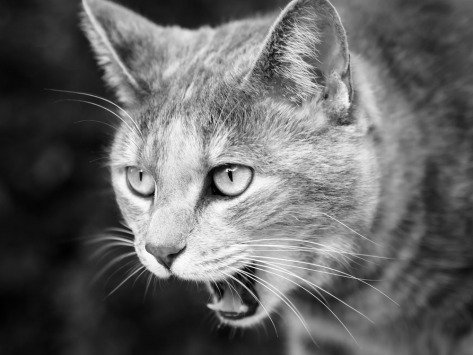The Complete Cat Hairball Guide: Everything You Need to Know
As a cat parent, you probably dread that sound. You know the one: the ack, aaaccckkk, retching sound your beloved kitty makes when she is about to heave up a hairball.
While hairballs are a fairly common occupational hazard of being a cat parent, you might be surprised to learn that they are not a normal part of a healthy cat’s life. In the last five years or so veterinarians have been paying more attention to the underlying causes of hairballs, according to Dr. Cathy Lund, of City Kitty, a feline-only veterinary practice in Providence, R.I., and Dr. Neil Marrinan of Old Lyme Veterinary Hospital in Old Lyme, Conn.
“We used to think hairballs were pretty innocuous, but we have learned that cats who experience difficulty with hairballs may be cats who have intestinal issues,” Lund says.
Because while that hacking sound may make pet parents think their cat has allergies or asthma, hairballs don’t originate in the lungs. Hairballs originate in the stomach. “When you see a hairball, you know your cat is vomiting,” Marrinan says.
What Do Cat Hairballs Look Like?
You probably know one when you see one, but to be clear, hairballs are thick mats of hair that are usually tubular in form—not shaped like a ball, despite the name—and are covered in a slippery or slimy substance (mucus). The more-oval shape comes from passing through the esophagus. Hairballs can be as small as an inch or up to a few inches or more in size.
How Do Cat Hairballs Form?
Cats ingest hair as they lick themselves repeatedly while grooming their coats. Because a cat’s tongue has backwards-facing barbs on it, the tongue moves hair into the mouth, down the esophagus and into the stomach.
Even longtime pet parents of the most fastidious felines might be surprised to learn that a cat spends 30 percent of her waking hours grooming herself, Lund says. “Hairballs are a side effect of cats being obsessive-compulsive groomers.”
Any cat can develop hairballs, from long-haired breeds to domestic shorthairs, the doctors note.
What Causes Cat Hairballs?
Under normal circumstances, the grooming obsession that causes cats to ingest hair should not be a problem. The hair should move through the digestive system along with food and be eliminated in feces. Hairballs become a problem when the cat’s digestive system fails to move the hair efficiently through the stomach and intestines and out of the body as waste.
“It’s basically a mechanical problem, whether it (the hair) makes it past the stomach is a question of motility (how quickly matter moves through the digestive system),” Lund says.
A number of treatable health issues can cause motility problems. Some illnesses that can slow down digestion include hyperthyroidism and inflammatory bowel disease, Marrinan says. Other underlying gastrointestinal issues that can make your cat prone to hairballs include gastroenteritis, intestinal cancers and valve problems.
Cat Hairballs: How to Handle Them
An occasional hairball may not be anything serious—cats can vomit up hair and food if they eat too fast or develop a sensitivity to their regular food, Marrinan says.
“Occasional vomiting also may be due to eating plants outside, but if you notice it, and certainly if it is more than once a month, it is likely a problem,” he says.
Due to the seriousness of some of the potential causes of hairballs, however, Marrinan and Lund suggest pet parents take their cat to the vet if she starts producing hairballs. The only way to determine if a simple change in diet is enough to resolve the issue or a more serious health problem is present, is to have your regular vet examine your cat, both doctors stress.
Diagnosing Hairballs in Cats
To get to the bottom of the hairball issue, your vet will likely want to conduct some diagnostic tests, which can include bloodwork, X-rays and an ultrasound of your cat’s stomach and intestines, or an endoscopy—using a tiny scope to look inside your cat’s stomach while she is anesthetized and taking tissue samples to biopsy (examine under a microscope).
Treating and Preventing Hairballs in Cats
Treatment requires identifying and addressing the underlying cause, whether it is an inflammatory bowel disease, cancer or dietary issue. Some breeds, such as Maine Coon and Rag Doll, are susceptible to intestinal valve problems, which can contribute to the development of hairballs, Lund says.
The occasional hairball can be prevented by feeding your cat a flavored petroleum-jelly-based remedy that will help move hair through the digestive system. “Think brown sugar flavored Vaseline,” Marrinan says of the over-the counter remedies.
In addition, some vets may ecommend changing your cat’s diet.
The Bottom Line on Cat Hairballs
The most important thing to keep in mind is that vomiting up hairballs is not normal or healthy in cats, both doctors stress.
If your cat is throwing up hairballs, don’t try to treat the symptoms without knowing what is causing her to vomit. Take her to the vet for an accurate diagnosis and precise treatment.